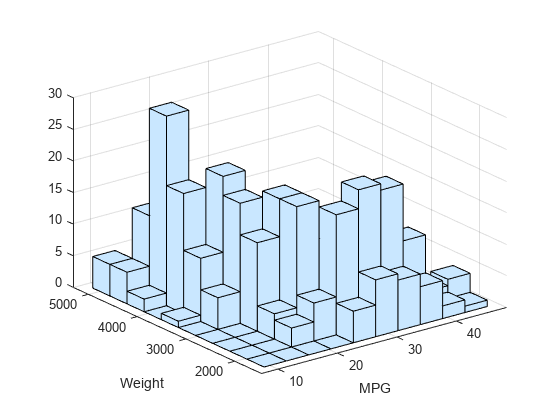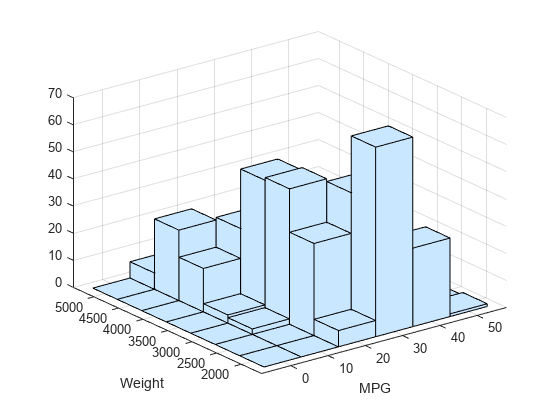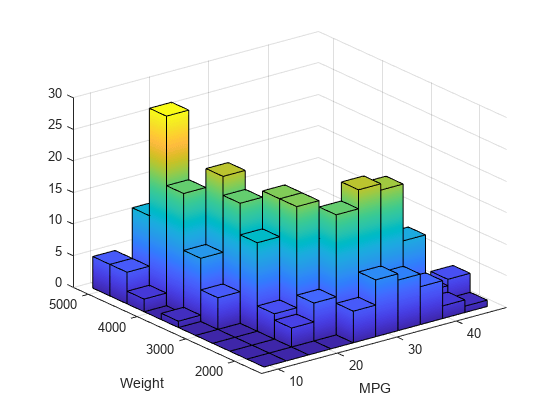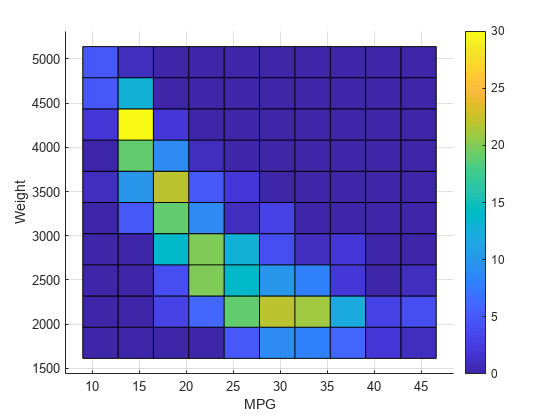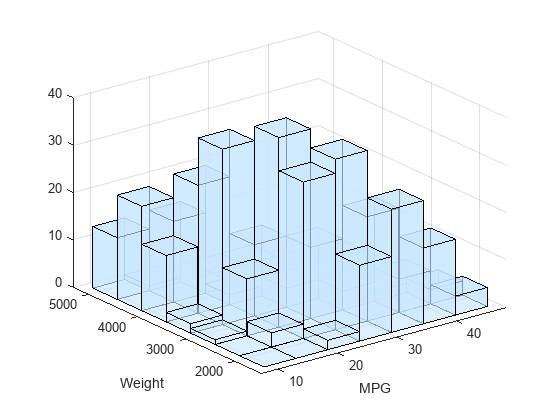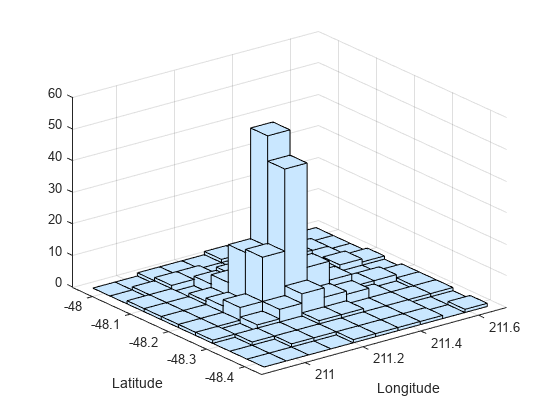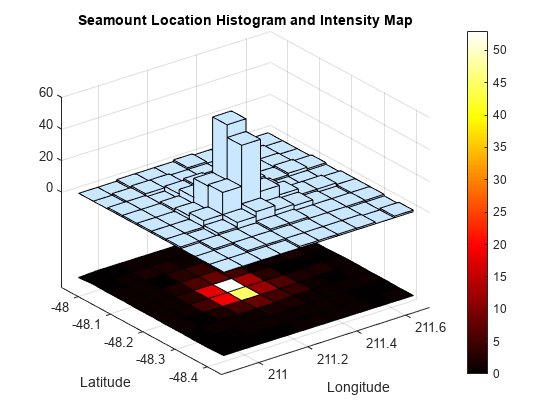hist3
(권장되지 않음) 이변량 히스토그램 플롯
hist3은 권장되지 않습니다. histogram2를 대신 사용하십시오.
구문
설명
hist3(는 균일한 간격으로 배치된 10×10 크기의 Bin을 사용하여 X)X(:,1) 및 X(:,2)에 대한 이변량 히스토그램 플롯을 생성합니다. hist3 함수는 3차원 직사각형 막대로 Bin을 표시하며, 각 막대의 높이는 Bin에 포함된 요소의 개수를 나타냅니다.
hist3(___,는 위에 열거된 구문의 입력 인수와 함께 하나 이상의 이름-값 쌍의 인수를 사용하여 그래픽 속성을 지정합니다. 예를 들어, Name,Value)'FaceAlpha',0.5는 반투명 히스토그램을 생성합니다. 속성 목록은 Surface 속성를 참조하십시오.
hist3(는 현재 좌표축(ax,___)gca) 대신 ax로 지정된 좌표축에 플로팅합니다. 옵션 ax는 위에 열거된 구문의 모든 입력 인수 조합 앞에 올 수 있습니다.
예제
입력 인수
이름-값 인수
출력 인수
팁
hist3 함수는 곡면 플롯 유형인 이변량 히스토그램을 생성합니다. 하나 이상의 이름-값 쌍의 인수를 사용하여 surface 속성을 지정할 수 있습니다. 또한, 히스토그램을 생성한 후에는 surface 속성값을 변경하여 히스토그램의 모양을 변경할 수 있습니다. s = findobj(gca,'Type','Surface')를 사용하여 surface 객체의 핸들을 구한 다음 s를 사용하여 surface 속성을 수정합니다. 예제는 그래픽 속성 조정하기 항목을 참조하십시오. 속성 목록은 Surface 속성를 참조하십시오.
대체 기능
histogram2 함수를 사용하면 Histogram2 객체를 사용하여 이변량 히스토그램을 생성할 수 있습니다. histogram2의 이름-값 쌍의 인수를 사용하여 정규화를 사용하고(Normalization), 각 차원의 Bin 너비를 조정하고(BinWidth), 히스토그램을 3차원 막대 대신 바둑판식으로 배열된 직사각형으로 표시할 수 있습니다(DisplayStyle).
버전 내역
R2006a 이전에 개발됨
참고 항목
accumarray | bar3 | histcounts2 | histogram2 | binScatterPlot
